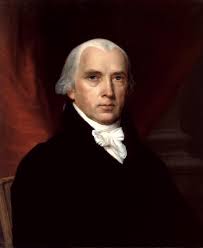
We have strayed far from the Founding Father’s original intent for our country. This is due, in a substantial part, to the Civil War. Ironically, the Civil War almost united the country. The North fought the South, the USA fought the CSA, but another battle was being determined in the War Between the States. This battle was the age-old contention that had arisen back in 1789 with the Constitutional Convention: the battle between Federalism and Anti-Federalism. One could view the Civil War as a war between the Anti-Federalist, states’ rights South and the Federalist, “big government” North. Indeed, Abraham Lincoln was one of the first American Presidents to use his executive powers to a great extent, possibly more than any other President before him. Before the Civil War, one would say that the United States “are”. After the War, one would say that the United States “is”. Before the War, the emphasis lay on “States”. Afterwards, it lay on “United”.
Decades before the Civil War, however, a step was taken by prominent Anti-Federalists to preserve states’ rights. The doctrine of nullification was established with the Virginia and Kentucky Resolutions of 1798 and this principle would set the stage for states’ rights until the Civil War.
In 1798, John Adams and his administration passed the controversial Alien and Sedition Acts, meant to hinder Americans from opposing the government. This was only nine years after the Constitution had been established. Men like Thomas Jefferson and James Madison strongly opposed the act on the grounds that it violated freedom of speech. Jefferson and Madison decided that if a state believed that a certain federal law was unconstitutional, it could declare that law “null and void” and simply refuse to abide by it. This doctrine was expressed in the controversial Virginia and Kentucky Resolutions. Both Virginia (encouraged by Madison) and Kentucky (encouraged by Jefferson) declared the Alien and Sedition Acts unconstitutional and thus, null and void, within their borders.
Both states received quite the backlash. The rest of the Union disapproved strongly of the actions of Virginia and Kentucky. They called it “insurrection”. Eventually, Thomas Jefferson was elected President in 1800, the Alien and Sedition Acts were expired and the crisis caused by the Virginia and Kentucky Resolutions was past.
Although the “crisis” of nullification in 1798 was relatively short-lived, it set the stage for even more conflict in the arena of states’ rights. Another “nullification crisis” arose in 1828, with South Carolina’s John C. Calhoun in the midst of the whirlwind. This time, it was federal tariffs that caused the nullification, but that’s another story. Later, when the Southern states seceded from the Union in 1860-1861, many people looked to Jefferson and Madison’s Virginia and Kentucky Resolutions as the seeds of secession.
Interesting Fact of the Week-When David Farragut was only twelve years old, he successfully sailed a captured British ship to port during the War of 1812. When the vanquished British captain objected to having his ship under the command of a “child” he threatened to mutiny. The young Farragut ordered the captain to remain below deck or face David’s pistol. The mutiny was stillborn.
Inspiring Quote of the Week-“The circulation of confidence is better than the circulation of money.” -James Madison
